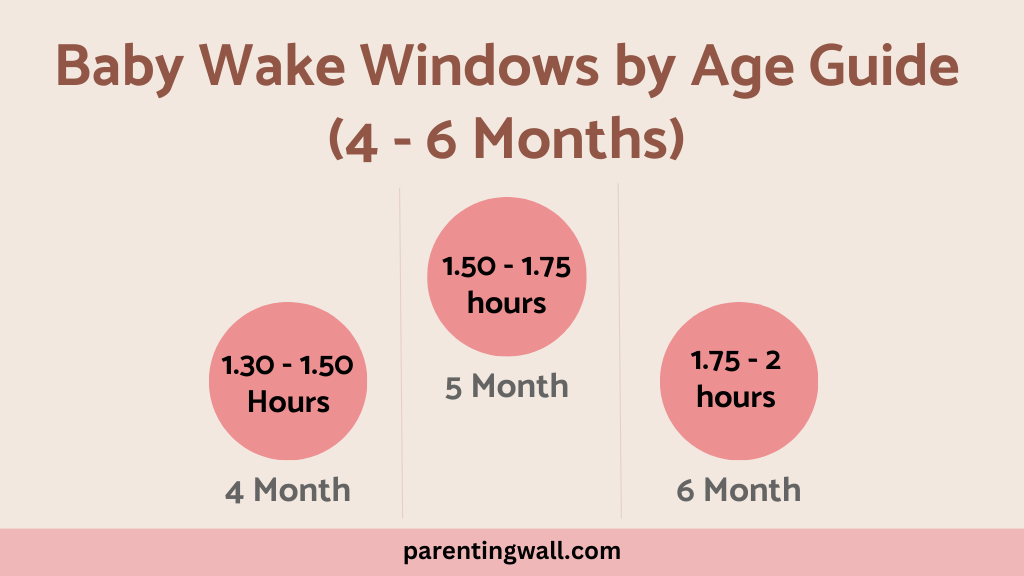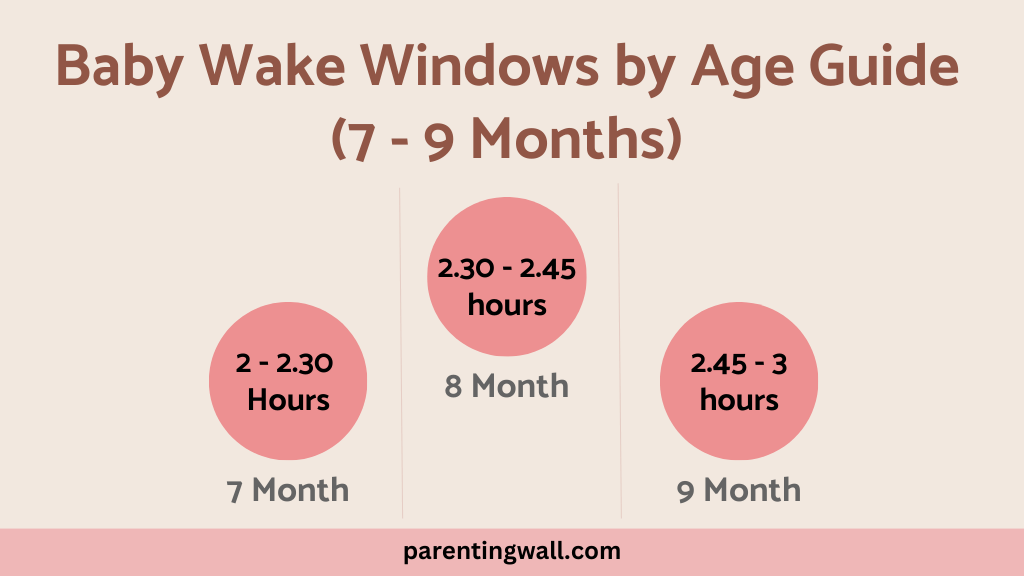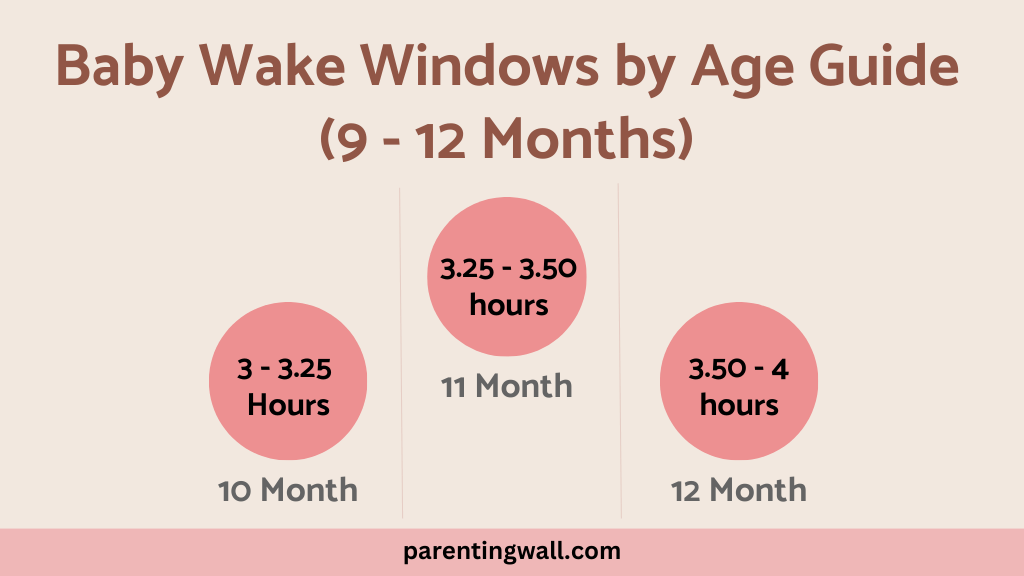If you have tried all baby sleep training techniques but haven’t succeeded in setting up a sleep routine, it is time to understand the concept of wake windows by age. Every baby has a different sleeping schedule, which parents need to understand and implement.
Your baby needs a lot of sleep for growth and development, but a disturbed sleep pattern and sleep period would only make the baby cranky and fussy. According to age, longer wake windows, lead to the production of stress hormones like adrenaline and cortisol that interfere with the body’s growth and may have negative long-term impacts if ignored.
The age-appropriate wake windows are thumb rules for putting your baby to sleep without getting overtired. Knowing and following the right wake windows can greatly affect a baby’s sleep quality, mood, and development. In this article, we will explore:
- What are wake windows?
- Why it’s important to follow age-appropriate wake windows
- Signs of right wake windows
- How wrong wake window affect your child
- Wake window guidelines for different age groups
- How to adjust wake windows as your baby grows
- And some tips and tricks for better baby sleep
By the end of this article, you will have a better understanding of wake windows and how to establish consistent ones for your baby. Let’s get started!
What Are Wake Windows?
A baby wake window can be defined as the time for which your little one stays awake between two naps. To calculate the average wake window consider the time the baby is out of the crib and the next nap time. Wake time includes activities like crawling, feeding, laughing, and playing, which tires your newborn baby. The baby’s sleep period helps in relaxing the body.
The wake window varies with age and tends to increase gradually, so it becomes crucial to know the recommended wake windows. Some parents believe that if they reduce daytime napping, the child will automatically have an early bedtime, but this isn’t the right approach. A well-scheduled daytime baby sleep only helps the baby.
Importance of Wake Windows by Age
Healthy sleep habits and awake time are crucial since the baby adopts the routine. You can still swaddle an infant in the crib, but as he starts independent sleeping, you may witness your baby’s sleep struggle which is a common issue during baby teething or illness.
A shortest wake window results in a baby not wanting to lie in the crib. While a longer wake window leads to restlessness. The right wake window by age leads to smooth sleeping, resulting in a happy, healthy child.
Wake Windows By Age
In this article, let’s discuss the baby wake windows parents should know. We would start with the infants and move to toddlers to help you know the baby’s sleep transition pattern with growing age.
1. Wake Windows for Newborns (0-3 months)

Infant wake window by age is all about understanding the baby’s sleep cues and staying alert since, as a new parent, you learn a lot about baby care. In the first month, an ideal wake window ranges from 35-60 minutes since your baby isn’t mobile and alert.
The first wake window of a newborn is often one of the short wake windows of the day. This seems backward since they just slept all night, right? However, babies often get sleepy again soon after their morning nap and have longer awake periods later in the day.
If you use a HALO Swaddle, the baby has uninterrupted fall asleep, which is a nice approach. One challenge here is establishing awareness of the baby’s night light as the baby wakes several times to feed.
At the 3-month mark, the baby’s wake window is 75-120 minutes. The tiny tot now interacts with you and is developing observation, staying asleep for longer. With experience, you understand the baby’s sleep cues indicating tiring signs.
Tips For Sticking To Wake Window for Newborns
- Establishing a consistent sleep routine: For the first 3 months, develop a first nap baby’s schedule and have frequent short cycles without exerting sleep pressure on the baby- a challenge every parent has to tackle without fail.
- Avoiding overstimulation before bedtime: Understand that your child isn’t aware of bedtime, and you may struggle to make him fall asleep for a longer duration between sleep periods. However, overstimulation during bedtime would only irritate the newborn, complicating the process further.
- Implementing soothing techniques: Massaging, music, patting, and swaying induce sleep as the baby feels relaxed. Use baby-safe oil and comfortable clothes during bedtime. Maintain the room temperature for sleep conditions according to the weather.
2. Wake Windows for Infants (4-6 months)

4-month baby’s wake windows are 90-120 minutes long, shorter during the early morning wake-ups and longer later. You may still consider the sleep cues a crucial indicator of maintaining a balanced last nap schedule.
During awake time, let the child interact with things around him, introduce play mats and tummy time to keep him engaged, physically active and strengthening the muscles. An active baby with short naps during the day stays happy and has the least sleep regression.
The ideal 5-month wake window is 1-2 hours long with 3 daytime baby’s naps. 6 months old is the age to introduce solid food, keeping him full longer and falling asleep better- witness a major baby sleep transition. The 6-month wake window is 1-2 hours, with 2 daytime sleep naps.
Tips for Sticking To Wake Windows for Infants
- Introducing a bedtime routine: The child responds to night light at 4-6 months, minimizing sleep pressure and uninterrupted night-time sleep. With few efforts, you can introduce healthy sleeping habits that would last for long.
- Creating a sleep-friendly environment: Babies sleep better if you render a soothing environment as their senses are growing stronger, reacting to sounds and disturbances around; therefore, make them sleep in a calm place.
- Encouraging self-soothing skills: By now your little angel has self-soothing skills so introduce a pacifier to calm the baby, along with other techniques like massage, music, etc.
3. Wake Windows for Babies (7-12 months)

By 7-12 months, you can set baby wake windows with the least effort if you follow a routine since infancy. The 8-month-old wake window ranges between 2.5 and 3.5 hours. During his stay awake time, the baby would play with his toys, start to crawl around, and need better sleep to recover from the tiredness.

The baby’s 10-month-old wake window will extend from 3-4 hours with longer wake time before bedtime. As your baby turns 1, he needs 10-12 hours of uninterrupted night sleep and a short nap during the day. Remember if your baby takes a short nap, then their next wake window will shrink.
Tips For Sticking To Wake Windows for Babies
- Establishing a consistent sleep schedule: The best way of sticking to the recommended baby wake windows is to develop a consistent schedule. Meeting the baby’s sleep needs becomes easy when you follow a routine, demanding less effort to make him fall asleep during bedtime.
- Limiting screen time before bed: Babies with extended screen time tend to face sleep regression with long term side-effects. Limited screen time during the daytime is fine but before bed is a complete no as the child will get habitual further impacting the quality of life and wellness.
- Encouraging physical activity during the day: At 1, the baby will do various activities in the wake window. The 9-month-old wake windows are different when compared to a 6 month baby’s wake windows. Thus, modify your approach to the changing baby’s needs. Achieve this by encouraging the child to perform physical activities during the stay awake time and enjoying this phase in the best possible way.
4. Wake Windows for Toddlers (1-3 years)
The toddler phase begins at 1, and his sleep cycle is 11 hours of night-time sleep and 1 or 2 short naps of 2.5 hours. If your baby falls asleep too little or more than the average sleeping period, it is best to consult a sleep consultant- an expert who can help you attain a healthy nap transition at a different child’s age with minimal sleep regression.
As the baby’s age reaches 3, his wake windows vary according to the sleep needs. Some children with a lot of physical activity like walking, swinging, and playing tend to take 2 longer naps during the daytime, while others with limited activity may not show tired signs when the next sleep period rolls out and rejuvenates even with 1 nap. Thus, expect more giant wake windows which would further increase when your kiddo starts schooling.
Tips for Sticking To Wake Windows for Toddlers
- Better Sleep Quality and Duration: As the children’s wake windows become longer, good sleep becomes essential to relax and release good hormones for growth and development.
- Improved mood and behavior: Your baby will not communicate if he feels tired and sleepy. Therefore, understand the sleep cues and give favorable sleep conditions if you have a cranky baby on your hands. Do not over-stress if the child wishes to sleep before bedtime since some days may be more tiring than others.
- Enhanced cognitive development: At 1, the baby has well-developed cognitive skills so engage him in games and activities in the wake time and prepare him for school.
- Overall well-being for both children and parents: Your baby will be happy and healthy only when you are in good health. Thus, focus on yourself as well and get proper sleep and rest. Resting whenever you get time with short naps during the day is a good approach.
Right Wake Windows Signs
Young children, especially newborn babies, cannot verbally communicate to sleep, but they show signs like:
- Yawning
- Disinterest
- Rubbing their eyes
- Snuggling
To identify signs of an overtired baby, pay attention to your baby’s sleep cues. Create a peaceful sleep environment by placing your baby crib in a quiet room. This will help them drift off to sleep more easily.
How Wrong Wake Windows Affects Your Child?
The age-appropriate awake windows vary considerably in the first 3 years of child growth and development. Thus, parents should be aware of the right sleep schedule to avoid high stress levels. To raise a physically healthy as well as emotionally and mentally strong individual, you should stick by the recommended wake windows to ensure proper rest through the day and during the night.
FAQs
1. Do wake windows matter?
A: Yes, wake windows matter as children depend on their parents for basic functions in the initial years. A “wake window” is the amount of time your baby is awake long between sleep periods, either their next nap or bedtime. Healthy sleeping habits instilled help babies become productive and smart later. They focus on activities in their awake period and learn new things with ease. But wake windows tend to become less important once your little one transitions to taking one nap a day.
2. What should I do during a wake window?
A: An age-appropriate baby wake window is an opportunity to interact and teach the baby via communicating and playing with toys. A baby who has rested properly has quick grasping power, which reflects as the baby starts to go to school.
3. How do I select the right wake windows for my child?
A: The right wake windows vary according to age, and hence, only knowledgeable parents who have researched well about awake time can select the longest wake window for their child. You should also consider the sleepy cues that the overtired baby gives when he gets tired and wants to rest.
4. What should I avoid in managing wake windows?
A: Avoid sticking to one full wake window since the baby’s sleep patterns change every few months. Also, you should give appropriate physical and learning activities to make the wake windows productive. Getting your baby’s wake windows correct will usually help to longer baby nap, sleep better at night, and not wake up too early in the morning.
5. What happens if my baby doesn’t follow the wake windows?
A: Abrupt sleep patterns make the baby fussy, which further affects his health and skill development. It is okay if the baby doesn’t follow wake windows for a day or two, but if no routine is set for long, it has adverse effects, compromising the quality of life of both parents and child.
6. Do wake windows include feeding?
A: Yes, feeding is included in the window range as infants feed on milk, with frequent sessions. As the child turns older and solid food is introduced, he stays content for longer and devotes more time to learning and playing.
7. How do we stretch wake windows?
Start by keeping a close eye on your baby’s natural sleep patterns and observe when they naturally wake up and go to sleep. Then, slowly extend the time between long naps by 15-30 minutes, allowing your baby to stay awake a bit longer during the day. As babies get older, they need more awake time to be tired enough for a good nap and bedtime. Your goal is to find the balance between being tired enough to fall asleep but not overly tired.
Conclusion
The age-appropriate wake window is a crucial aspect that every new parent should know and implement from the very first day. Comprehending wake windows makes nurturing the child easy for parents as they follow a set schedule and get enough time to refresh themselves.



